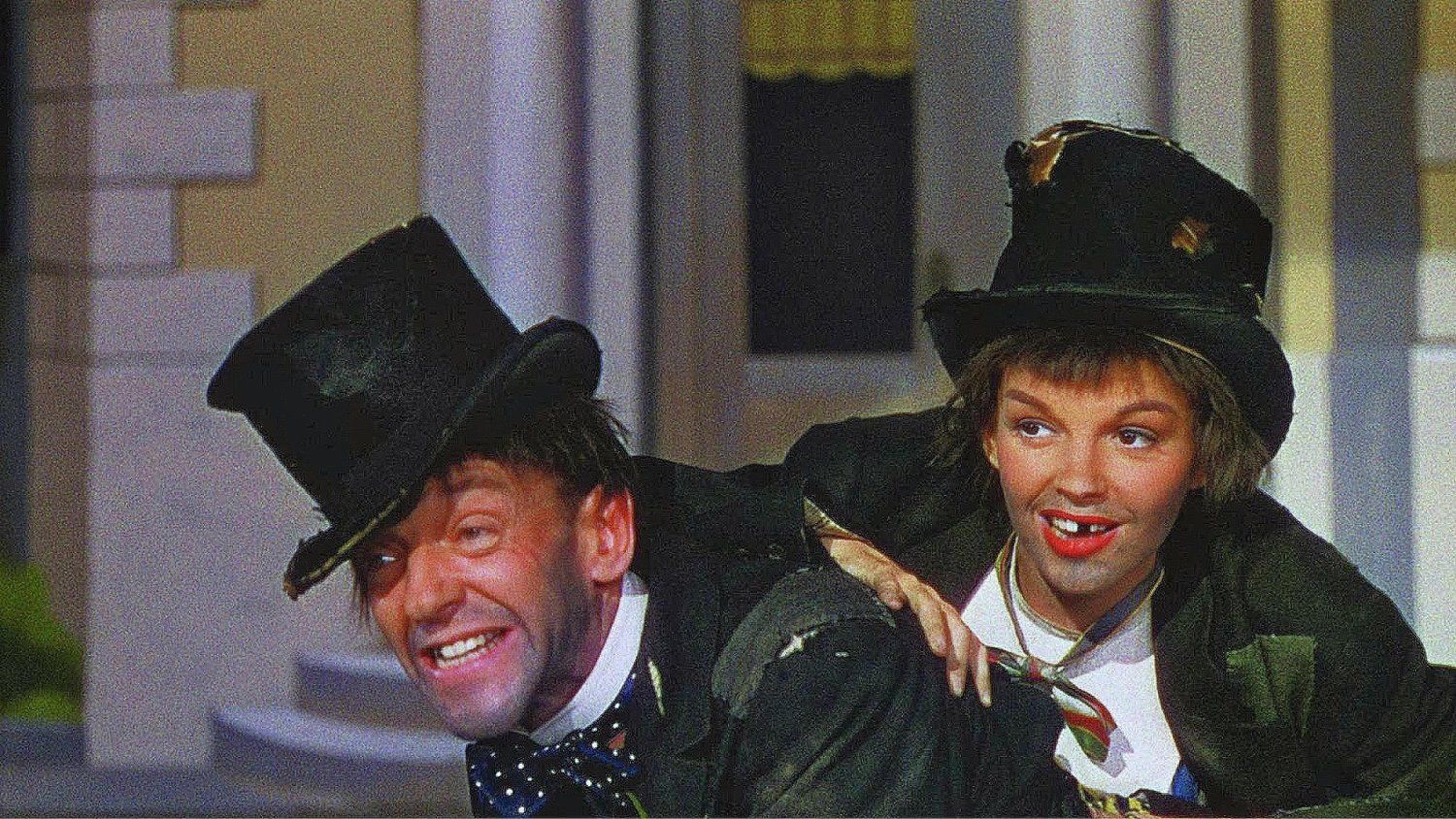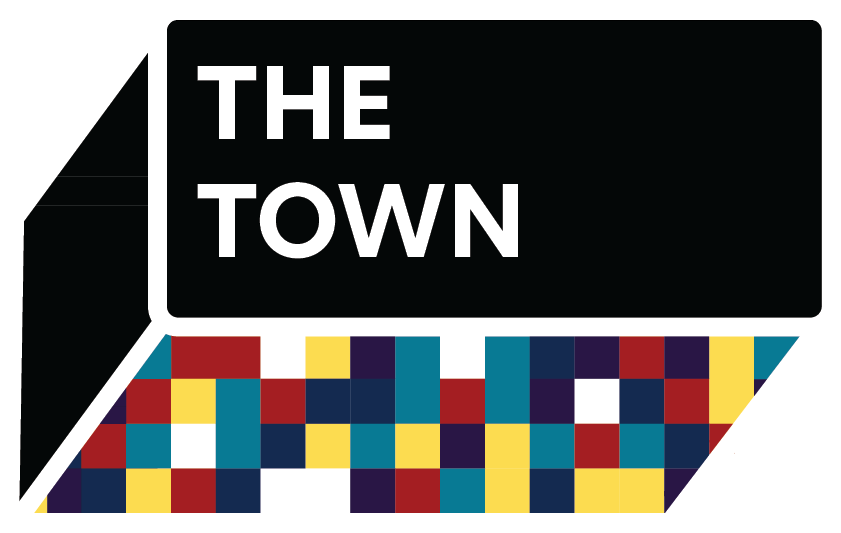Another Easter at the Church of Judy Garland

With Easter comes favourite traditions. Some look forward to dyed eggs, chocolate bunnies or glazed ham. But for me, a follower of the Church of Judy Garland, it’s rewatching Easter Parade (1948) which just so happens to be playing at Paradise Theatre tomorrow. The Charles Walter-directed musical, featuring the only time Garland was paired with Fred Astaire, is light on plot but heavy with talent. If you miss it at Paradise, it’s the perfect movie to put on once the Sunday dinner dishes are done.
First, it must be said that Easter Parade, despite the titular song by Irving Berlin, is not really about Easter. Set right before the First World War, Astaire plays Don Hewes, a dancer whose glamorous partner Nadine (the vivacious Ann Miller) has decided to leave the act (and, it appears, their romantic relationship) to pursue a solo career. Drowning his sorrows at a local bar, Don tipsily boasts he can replace Nadine with any odd chorus girl, and selects one at random that very night - newbie Hannah Brown (played by Garland).
But Hannah proves more ‘odd’ than he expected. For one thing, she has trouble remembering her left foot from her right. There’s a hilarious scene in which Don attempts to teach her a dance with a rubber band wrapped around one of her legs that keeps cutting off her circulation. Don errs by trying to make her exotic and stylish. Renaming her ‘Juanita’ and dressing her in ridiculous feathers, the pair perform a stiff, awkward number that comes across almost like a winking send-up of the dances Fred did with Ginger Rogers in the 1930s.
Eventually, Don realizes his mistake, throws out the stage name and feathers, and lets his partner’s natural talent shine as “just plain Hannah Brown.” Which, as it happens, mirrors how MGM treated Judy Garland in real life.
After her arrival at the studio at the age of 13, the MGM brass didn’t know how to market Judy. She was too old to be a child star and too young to be a leading lady. They didn’t consider her pretty enough to compete with the likes of Elizabeth Taylor or Ava Gardner, the type of classic beauties they traditionally contracted. Louis B. Mayer, the head of the studio, went so far as to nickname her “our little hunchback.” Producers cast her in movies in which her characters’ attempts at glamour and romance inevitably failed: plots where Mickey Rooney would bypass her for the likes of Lana Turner. The insecurities Judy developed during her early MGM years followed her for the rest of her life.
The question as to why gay men love Judy Garland is a big topic that’s probably best left for another day, but speaking personally, I relate deeply to this part of her story. Garland’s musicals were among the old movies I grew up on, but I don’t recall having a particular Judy obsession until my dad gave me Gerald Clark’s biography ‘Get Happy’ the year I went to university. Particularly during that exhilarating first year of independent living and romantic false starts, I found solace by projecting my experience onto a long-dead star who, despite being attractive, never thought she was beautiful and, despite heaps of talent, always worried about what would happen if the applause ever stopped.
Despite these obstacles, Garland’s natural acting talents (particularly her knack for comedy) and her once-in-a-generation singing voice, belting to the back row but with depths of emotion quivering beneath the surface, propelled her to stardom. Being cast in a little movie called The Wizard of Oz (1939) didn’t hurt either.
Briefly hired as director for Oz, one of George Cuckor’s lasting influences on the movie was stripping off the blonde wig the makeup department had put Judy in - a desperate attempt to make her more like Shirley Temple, the studio’s original pick for Dorothy. Like Don to Hannah in Easter Parade, Cuckor’s advice to Judy for her soon-to-be iconic role was simple and direct - just be yourself.
It wasn’t until Vincent Minnelli directed her in Meet Me in St. Louis (1943), for the first time framing her as a true leading lady, that audiences saw Judy as both talented and beautiful. As she was falling in love with her idealized reflection on screen, Garland was also falling in love with Minnelli and the two soon wed, co-producing little Liza.
Sadly, by the time Easter Parade was made, the marriage had soured. After making another good movie together, the WWII romance The Clock (1945), the duo suffered an artistic and financial flop with The Pirate (1948), a high-camp, Technicolour misfire set in the Caribbean. Garland went behind her husband’s back and requested someone else direct her next picture. It was a blessing in disguise when Gene Kelly, her co-star in The Pirate who was set to star in Easter Parade, suffered a volleyball injury and had to pull out. Fred Astaire happily came out of his early retirement for a chance to work with Judy.
On paper, the pairing is an odd one: Astaire, primarily a dancer with a gentlemanly soft-shoe, and Garland, primarily a singer with her intense vibrato. But the two had a ball on the set that comes across on screen. True, there’s no sizzling romantic chemistry between them. But you pick up on a sense of mutual respect for each other’s talent and pure enjoyment of working together. Their songs together shine.
A side note about songwriter Irving Berlin, who before dying in 1989 at the age of 101 wrote an estimated 1,500 songs, including ‘White Christmas’, ‘Happy Holiday’, ‘Putting on the Ritz’, and ‘God Bless America’. My dad used to remark how interesting it was that a Jewish immigrant from Russia spent his life producing music that celebrated the most mainstream, WASPy experience of America. In doing so, through countless Broadway shows and movies, he helped shape how Americans saw themselves.
Easter Parade’s stand-out number occurs near the film’s climax when Don and Hannah are riding a wave of success. Dirtying their faces and donning wigs and natty, dishevelled tuxedos, the duo perform ‘A Couple of Swells’ as two “tramps” poking fun at the pretensions of the upper crust: “We're a couple of sports, the pride of the tennis courts/ In June, July and August we look cute when we're dressed in shorts”. The two slap their knees and mug for the camera like a couple of old-heeled Vaudevillian comics.

The audience eats it up and, post-performance, Don and Hannah receive a round of applause when they enter a rooftop restaurant, the band even playing their song: a signal that they’ve finally made it. Interestingly, the very next song in the film is a traditional glamour girl number in which conventionally pretty women pose as living tableaux representing various lifestyle magazines of the period (‘Red Book’, ‘Good Housekeeping’, ‘Cosmopolitan’). Until Ann Miller arrives at the end and dances with an oversized fan, the number’s only purpose seems to be showing off attractive faces and stylish costumes. It’s as though the MGM patriarchy swooped in to say, dressing up like a hobo might be okay for Hannah/Judy, but ultimately the audience wants pretty girls and don’t you forget it!
Garland got the last laugh, though. Easter Parade was an unqualified hit, becoming Judy’s second-highest grossing movie after Meet Me in St. Louis, which MGM desperately needed at the time. The studio was in trouble in the late 1940s, as post-WWII audiences turned away from its house-style of saccharine small town naivety (“Love Comes to Football Town”, as The Daily Show satirized the studio’s musicals) and towards the gritty film noir Warner Bros. had on offer.
Even though Garland would part ways with MGM acrimoniously only two years later, in the long view it's her movies (and, for the most part, not those of her blander ‘more pretty’ contemporaries) that we still enjoy today.
Max Mosher is a writer, communications specialist, and Old Hollywood Correspondent for The Town. You can follow him on Instagram.





